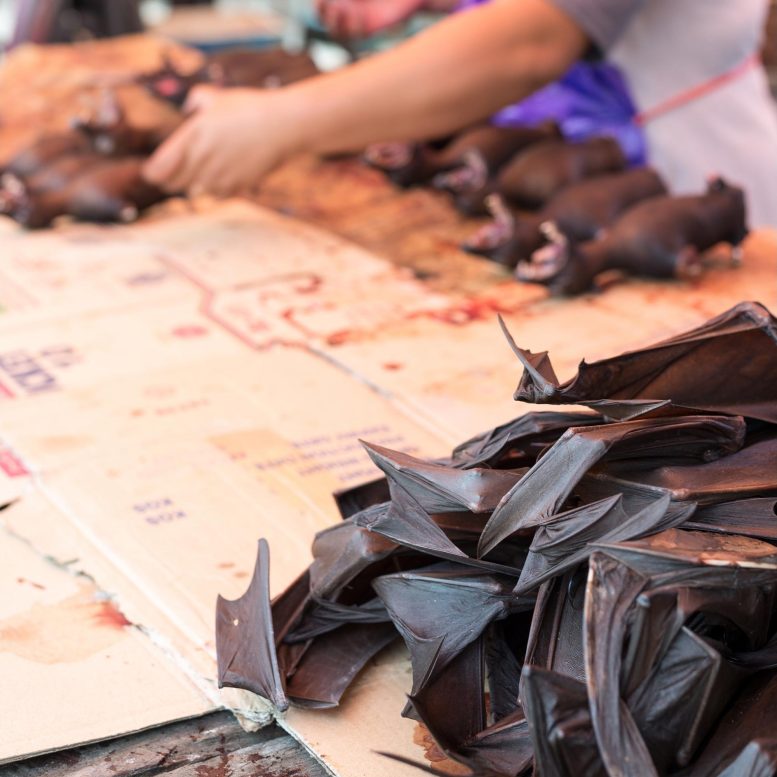
Bat meat for sale at a market.
An international team of scientists has determined that the earliest cases of COVID-19 in humans arose at a wholesale fish market in Wuhan China in December 2019. They linked these cases to bats, foxes, and other live mammals infected with the virus sold in the market either for consumption as meat or for their fur. The team of 18 researchers included a scientist at the University of Utah Health.
The finding confirms early reports, later dismissed by senior Chinese officials, that live animals sold at the Huanan Seafood Wholesale Market were the likely source of the pandemic that has claimed at least 6.4 million lives since it first emerged in China nearly three years ago. The study was published in the July 26, 2022, issue of Science.
“These are the most compelling and most detailed studies of what happened in Wuhan in the earliest stages of what would become the COVID-19 pandemic,” says Stephen Goldstein, Ph.D., a co-author of the study led by senior author Kristian Anderson, Ph.D., from the Scripps Research Institute in La Jolla and first author Michael Worobey, Ph.D., from the University of Arizona. Goldstein is a post-doctoral researcher in the department of Human Genetics at University of Utah Health. “We have convincingly shown that the wild animal sales at the Huanan Market in Wuhan are implicated in the first human cases of the disease.”
Among the study’s key findings:
- The emergence of SARS-CoV-2, the virus that causes COVID-19, can likely be traced to one or more of the 10 to 15 stalls in the market that sold live dogs, rats, badgers, porcupines, foxes, hares, marmots, hedgehogs, and Chinese Muntjac (a small deer). Health officials and researchers detected the SARS-CoV-2 coronavirus on animal cages, carts, and drainage grates in these venues.
- Neighborhoods within a half-mile of the market were the only areas where the virus was spreading in December 2019. Some researchers had previously suggested that the virus was brought into the market from elsewhere in the city and spread among its patrons. Instead, the new findings strongly suggest that the virus originated in the market via live animal sales, and slowly spread from there into nearby neighborhoods and then the city at large.
- Two variants of the SARS-CoV-2 virus were detected at the market. That suggests both variants originated independently at the market and helps confirm the researchers’ hypothesis that the early spread of the infection began there. If the virus originated elsewhere, it’s more likely that only a single variant would have been found.
Moving forward, the researchers offer suggestions to public officials to lower the risk of future pandemics. Namely, they should seek a better understanding of the wildlife trade in China and elsewhere and promote more comprehensive testing of live animals sold in markets.
Reference: “The Huanan Seafood Wholesale Market in Wuhan was the early epicenter of the COVID-19 pandemic” by Michael Worobey, Joshua I. Levy, Lorena Malpica Serrano, Alexander Crits-Christoph, Jonathan E. Pekar, Stephen A. Goldstein, Angela L. Rasmussen, Moritz U. G. Kraemer, Chris Newman, Marion P. G. Koopmans, Marc A. Suchard, Joel O. Wertheim, Philippe Lemey, David L. Robertson, Robert F. Garry, Edward C. Holmes, Andrew Rambaut and Kristian G. Andersen, 26 July 2022, Science.
DOI: 10.1126/science.abp8715

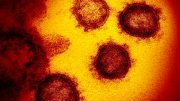
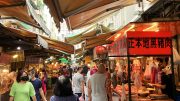
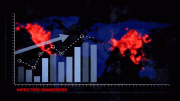
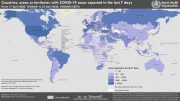
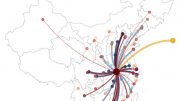
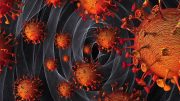
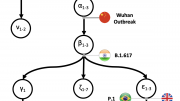
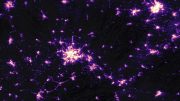
Worobey research team indicated,
“This report also documents the early presence of the A lineage of SARS-CoV-2 in a Huanan market environmental sample. This, along with the lineage A cases we report in close geographical proximity to the market in December, challenges the suggestion that the market was simply a superspreading event, which would be lineage-specific. Rather, it adds to the evidence presented here that lineage A, like lineage B, may have originated at the Huanan market then spread from this epicenter into the neighborhoods surrounding the market and then beyond.”, in the article, ‘The Huanan Seafood Wholesale Market in Wuhan was the early epicenter of the COVID-19 pandemic’, by Michael Worobey, Joshua Levy, and others, July 2022
If lineage A had a possible Huanan Seafood market origin, shouldn’t you expect to see more evidence of lineage A in the 824 HSM environmental samples than just one glove A20 as indicated by Gao. Shouldn’t you expect to see transitional genomes in the Huanan Seafood market, as lineage A transitioned to lineage B, or as lineage B transitioned to lineage A. Jonathan Pekar study group published the article ‘The molecular epidemiology of multiple zoonotic origins of SARS-CoV-2’, published July 2022,
“Lineage B viruses have a ‘C/T’ pattern at these key sites (C8782, T28144), whereas lineage A viruses have a ‘T/C’ pattern (C8782T, T28144C)……….. There are 787 near-full length genomes available from lineages A and B sampled by 14 February 2020 (data S1 and S2). However, there are also 20 genomes of intermediate haplotypes from this period containing either T28144C or C8782T but not both mutations: C/C or T/T, respectively……….These findings cast doubt on the claim that transitional C/C or T/T haplotypes between lineages A and B circulated in humans, reopening the door to the hypothesis that lineages A and B represent separate zoonotic introductions.”
The lack of transitional or intermediate genomes in early HSM environment samples and human cases, could lineage A have originated in HSM, from the same source as B without leaving evidence or a trace of transition, within the small December/November 2019 tMRCA period?
Why no A lineage present in HSM January 1, 2020, such as F13 wall sample and F54 ground sample showing active infective Covid-19, same as Wuhan-Hu-1?
Since both early lineage A and B genomes had the same spike gene, same receptor binding motifs and same furin cleavage sites, shouldn’t A ‘s infectivity early results in Wuhan ICU’s, have been similar to lineage B. But of the first seven recorded ICU cases are 100% identity and 100% query cover to Wuhan-Hu- 1 (MN908947.3) according to BLAST on NCBI.
MN988669/whu02 — 100% MN996530/wiv06 — 100% LR757996/beta wh-03 — 100%
MT093631/wh-09 — 100% MT291828/wh03 — 100% MN996527/wiv02 is 99.99% identity.
The accepted narrative is that lineage B manifested itself first in Wuhan, and lineage A a short time later. Is this new Worobey article consistent with the early case lineage B homology and high infectivity?
Looking at Covid-19 origin from a different perspective, at least three early Chinese Covid-19 studies reference Atlanta CDC bat coronavirus BtKy72 complete genome in January 2020, before that genome was filed with NCBI February 5, 2020. https://www.ncbi.nlm.nih.gov/nuccore/KY352407.1 BtKy72 coronavirus has been shown to be an important aspect of Covid-19 evolutionary history, via recombination hundreds of years ago, or possibly by cell passage more recently.
(1) Beijing CDC article, ‘Genomic characterisation and epidemiology of 2019 novel coronavirus: implications for virus origins and receptor binding’, by Roujian Lu, Xiang Zhao, and others, Beijing CDC, published January 29, 2020, may be found at,
https://usrtk.org/wp-content/uploads/2021/02/Baric-Emails-2.17.21.pdf
Line 140 in the pdf, Figure 3 has the phylogenic tree of complete genome bat coronaviruses, published January 29, 2020, showing Beijing CDC had full knowledge of BtKy72 bat coronavirus complete genome, six days before the genome was filed with NCBI by the Atlanta CDC February 5, 2020.
(my original comment on BtKy72 sequencing, https://dnascience.plos.org/2021/03/11/on-the-anniversary-of-the-pandemic-considering-the-bioweapon-hypothesis/ May 31, 2021 2.59 pm)
(2) Another early Covid-19 article, ‘Cross‐species transmission of the newly identified coronavirus 2019‐nCoV’, by Wei Ji, Wei Wang, and others, J Med Virol., received for publication January 17, 2020, Figure 1 phylogenic tree, references BtKy72 complete genome, three weeks before that genome was published on NCBI by the Atlanta, Georgia CDC. Quoting the article,
“The other two coronaviruses (BtCoV/BM48‐31/BGR/2008 and BtKY72) from Bulgaria and Kenya were grouped as “Clade B.”
(3) ‘Origin and Evolution of the 2019 Novel Coronavirus’, by Liangsheng Zhang, Fu-ming Shen, and others, published online Feb 3., 2020 https://www.ncbi.nlm.nih.gov/pmc/articles/PMC7108176/?report=classic
Figure 1A of the article references BtKy72 complete genome.
(4) Christian Drosten had knowledge of the E and N genes of BtKy72 by January 13, 2020. See the article ‘Diagnostic detection of Wuhan coronavirus 2019 by real-time RTPCR -Protocol and preliminary evaluation as of Jan 13, 2020’ , ANNEX section, N-sarbeco-oligos and E-sarbeco-oligos.
https://www.who.int/docs/default-source/coronaviruse/wuhan-virus-assay-v1991527e5122341d99287a1b17c111902.pdf
The Atlanta CDC stated in May 2019 regarding BtKy72 sequencing,
“Complete genome sequencing (for BtKy72) was not performed due to limited viral loads in fecal samples from the other four betacoronavirus-positive bats (eg, BtKy73, BtKy74, etc).”—— in the article, ‘Complete Genome Sequence of a Severe Acute Respiratory Syndrome-Related Coronavirus from Kenyan Bats’, by Ying Tao and Suxiang Tonga, Atlanta Georgia CDC, May 13, 2019 received for publication date.
This Chinese laboratory pre-February 5, 2020 knowledge of BtKy72 complete genome should raise questions regarding the ‘evolutionary history’/‘laboratory history’ of Covid-19.
Let’s try to think it thru:
There was a huge economic war going on between China & USA & USA was winning!
But suddenly, a virus comes out of a Chinese city (w/ a virus research lab!) & destroys economies of USA & all its allies (but NOT the economy of China somehow!)!
The virus quickly spreads to whole rest of the world, but w/o first spreading into the rest of China somehow!
(By the way, realize that giving the enemy a disease is actually a wellknown ancient war tactic/trick!)
There are millions of dead & trillions of damage to the rest of the world, but somehow, China insists preventing all attempts to research the origin of the virus!
They do not want to prove themselves innocent?
Are we seriously supposed to believe that China could really/actually have an innocent/legitimate reason to justify preventing such research (but somehow just do not want to tell to the whole world?)?
(I think, it is also very clear that Chinese Government already knew about the virus way before than when they actually informed/warned the rest of the world!)
(Also, let’s realize that, there is really/actually no need for the virus to be engineered! It could be just a selected suitable natural virus that is “trained” to attack humans!)
(Imagine afterwards, for example, secretly sending operatives to various target countries/cities in the world
& after the virus starts spreading in all target countries, imagine, you also release it in your own target city (Wuhan) & quickly/easily contain it there (since you already know very well what exactly you are dealing w/!)!)
The July 26, 2022 article, ‘The Huanan Seafood Wholesale Market in Wuhan was the early epicenter of the COVID-19 pandemic’, by Michael Worobey, Joshua Levy and others states,
“The two lineage A cases for which we have location information involved the two earliest lineage A genomes known to date. Neither case reported any contact to the Huanan market (7). The first case was detected before any knowledge of a possible association of unexplained pneumonia in Wuhan with the Huanan market (5) and therefore could not have been a product of ascertainment bias in favor of cases residing near the market. The second had stayed in a hotel near the market (32) for the five days preceding symptom onset (25). Relative to the age-matched Wuhan population distribution, the first individual resided closer to the Huanan market (2.31km) than expected (p=0.034).”
Worobey stated “the first individual (lineage A) resided closer to the Huanan market than expected.” In a November 2020 article, Worobey stated regarding the home address of this
early lineage A Covid-19 case,
“one from a patient (age and gender not reported) who stayed in a hotel near Huanan Market in the days before illness onset in December (13) and the other from the 62-year-old husband in cluster 1 who visited Yangchahu Market, just a few blocks north of Huanan Market (1), and lived just to the south (see the figure).”—in the article, ‘Dissecting the early COVID-19 cases in Wuhan’, by Michael Worobey.
Worobey knew the ‘residences’ of some of the early Covid-19 cases, those who lived ‘just south’ of the Huanan Seafood Market. Worobey figure at the end of “Dissecting….’ shows he had knowledge of the ‘home addresses’ of many of the early cases. He may have gotten that information from the WHO, who stated in February 2021,
“Detailed reconstruction of current knowledge starting with the initial cluster of cases, starting at the earliest cases (prior to 31 December 2019), and including the study related to the Huanan market cluster ……..The information of cases is mainly collected through the direct reporting system of infectious disease information network and retrospective questionnaires done by the confirmed cases, including general information such as age, gender and home address, as well as the time of onset, market exposure history, exposure history with other patients, animal exposure history, and other onset and exposure related information”, —- ‘WHO-convened Global Study of Origins of SARS-CoV-2: China Part Joint WHO-China Study 14 January-10 February 2021 Joint Report – ANNEXES
Setting aside the question as to whether virologists should be allowed to use peoples home addresses that they provided in private, for research purposes.
In his February 26, 2022 preprint, ‘The Huanan market was the epicenter of SARS-CoV-2 emergence’, the Worobey study group admitted they copied epidemiological linkage figures from the WHO reports, ‘Figure S4. Fig. 23 page 44 from the WHO mission report. The radius of each circle marker each case location is about 125 m.’
Worobey’s Figure in his article “Dissecting…..’ is almost a copy of the WHO’s ‘Fig. 3. Spatial distribution of the 174 cases by home address’ and ‘Fig. 4. Spatial distribution of the 164 cases living in Wuhan by home address’.
The information that Worobey provided in ‘Dissecting the early COVID-19 cases in Wuhan’, in November 2021, must be integrated into this new July 26, 2022 paper, to understand lineage A epicenter relatedness.
“Given that the elderly couple at HPHICWM (Hubei Provincial Hospital of Integrated Chinese and Western Medicine) was the WHO report’s cluster 1, it follows that the husband, illness onset 26 December (1), must be the source of the earliest lineage A sequence, Wuhan/IMEWH01/2019 (GenBank accession number MT291826) (see fig. S1), which he most likely got from his wife, who became ill 15 December…….Crucially, however, the now famous “earliest” COVID-19 case (1), a 41-year-old male accountant, who lived 30 km south of Huanan Market and had no connection to it—illness onset reported as 8 December—appears to have become ill with COVID-19 considerably later (12)….and date of hospitalization as 22 December (13).”
Wuhan/IMEWH01/2019, MT291826, the elderly husband, has a collection date of December 30, 2019 according to NCBI. Lineage A sample. https://www.ncbi.nlm.nih.gov/nuccore/MT291826
At that time in November 2021, Worobey thought that the WHO’s cluster 1 elderly couple was the earliest lineage A sequence. From the WHO’s own 2021 report regarding cluster 1 Covid-19 infected persons,
“Cluster 1: Including two confirmed cases, living together as husband and wife. Both of them denied case contact history, as well as history of exposure to Huanan Market. Spouse one, 62 years old, fell ill on 15 December 2019, spouse two, 62 years old, fell ill on 26 December 2019. Source of infection: Spouse one had a travel history to Thailand in November 2019, so imported infection cannot be ruled out. The married couple had bought shrimps from a Supermarket at Yangchahu, so cold chain food contact history cannot be ruled out either. The couple denied history of exposure to Huanan Market, however they had purchased and contacted chickens slaughtered in a market at Yangchahu, they might have been exposed to infection in other markets. The onset interval between the two was 11 days, because the couple lived together, it cannot rule out the possibility that spouse one was infected by spouse two.”—-‘ WHO-convened Global Study of Origins of SARS-CoV-2:
China Part Joint WHO-China Study 14 January-10 February 2021 Joint Report – ANNEXES’, page 157
This elderly couple lived south of HSM, within 2.31 km to the HSM, the epicenter.
Regarding the second earliest lineage A person’s (temporary) residence, Worobey wrote in his July 26, 2022 article,
“The second had stayed in a hotel near the market (32) for the five days preceding symptom onset (25)….. While the exact location of the hotel near the market was not reported (32), there are at least 20 hotels within 500 m (table S1). Under the conservative assumption that the hotel could have been located as far as 2.31 km from the Huanan market”
Worobey referenced the article, ‘Genomic characterisation and epidemiology of 2019 novel coronavirus: …’, by Roujian Lu and others, when he made this claim. Those authors observed,
“one patient (WH04) did not visit the market but stayed in a hotel near the market between Dec 23 and Dec 27, 2019 (table). ” Table Patient Information in that article shows WH04 as having no exposure to Huanan Seafood Market and his hospitalization sample taken January 5, 2020. But an earlier sampling ‘may’ have occurred December 30, 2019, SARS-CoV-2/human/CHN/Wuhan_IME-WH04/2019, complete genome, MT291829.1.
Worobey in his November 2021 article, ‘Dissecting the early Covid-19 cases in Wuhan’, similarly identified,
“a 41-year-old male accountant, who lived 30 km south of Huanan Market and had no connection to it—illness onset reported as 8 December—appears to have become ill
with COVID-19 considerably later (12). When interviewed, he reported that his COVID-19 symptoms started with a fever on 16 December; the 8 December illness was a dental problem related to baby teeth retained into adulthood (12). This is corroborated
by hospital records and a scientific paper that reports his COVID-19 onset date as 16 December and date of hospitalization as 22 December (13).”
based on WHO reports (see footnote 25). It is this 41 year old accountant that lived 30 km south of HSM, that most likely stayed in a hotel near HSM December 23 through 27, aka, WH04 (lineage A), who actually became sick with a fever December 16, 2019, according to Worobey own quote above. Possibly became Covid-19 infected nowhere near the epicenter.
Professor Zhao Su, the chief physician of the Department of Respiratory Medicine of Wuhan Central Hospital reportedly gave Caixin this account of the 41 year old accountant lineage A second person.
“On December 27, a 41-year-old man named Chen went to the Nanjing Road Hospital of Wuhan Central Hospital for treatment. ‘He is an accountant and lives in Wuchang. He has never been to the South China Seafood Market in Hankou. He started to have a fever on December 16 without any obvious cause. The maximum body temperature was 39.5 ° C, accompanied by palpitations, chest tightness, difficulty breathing after exercise, and physical strength. Significant decline, first seeing the doctor at Jiangxia District First People’s Hospital on December 22, did not improve.’ ‘Zhao Su told Caixin reporter’,” —-in the article, ‘Tracking the Source of Novel Coronavirus Gene Sequencing: When Does the Alarm Goes Off’, https://www.jenniferzengblog.com/home/2020/2/26/tracking-the-source-of-novel-coronavirus-gene-sequencing-when-the-alarm-goes-off
This lineage A second person went almost ten days with the lineage A Covid-19 coronavirus, before hospitalizing himself. Probably infected outside of the epicenter area.
On the other hand, the first lineage B case was a 41 year old Huanan Seafood Market worker whose BALF sample was taken December 26, 2019.
“Here we study a single patient who was a worker at the market and who was admitted to the Central Hospital of Wuhan on 26 December 2019………The patient studied was a 41-year-old man with no history of hepatitis, tuberculosis or diabetes.……. During admission, BALF (bronchoalveolar lavage fluid ) was collected and stored at −80 centigrade until further processing….This virus strain was designated as WH-Human 1 coronavirus (WHCV) (and has also been referred to as ‘2019-nCoV’) and its whole genome sequence (29,903 nt) has been assigned GenBank accession number MN908947”. —- in the article, ‘A new coronavirus associated with human respiratory disease in China’, by Fan Wu, Su Zhao, Bin Yu, and others, Shanghai Public Health Center, Wuhan Central Hospital and others, received for publication January 7, 2020.
Definitely in the middle of the epicenter.This lineage B (first/second) case sampling occurred about six days before the first lineage A sampling of a human. On the other hand, the A20 gloves Huanan environment sample taken January 1, 2020, lineage A, in the middle of the epicenter, in stall 15 or 17 according to Gao. Possibly in the same stall with F13 wall sample, lineage B. WHO cluster 2 HSM stall 15 employees?
Lineage A Covid-19 could have been on those gloves for up to 30 days prior. And who knows what A lineage stuff was originally in or on those gloves to cause the lineage A sampling January 1, 2020.